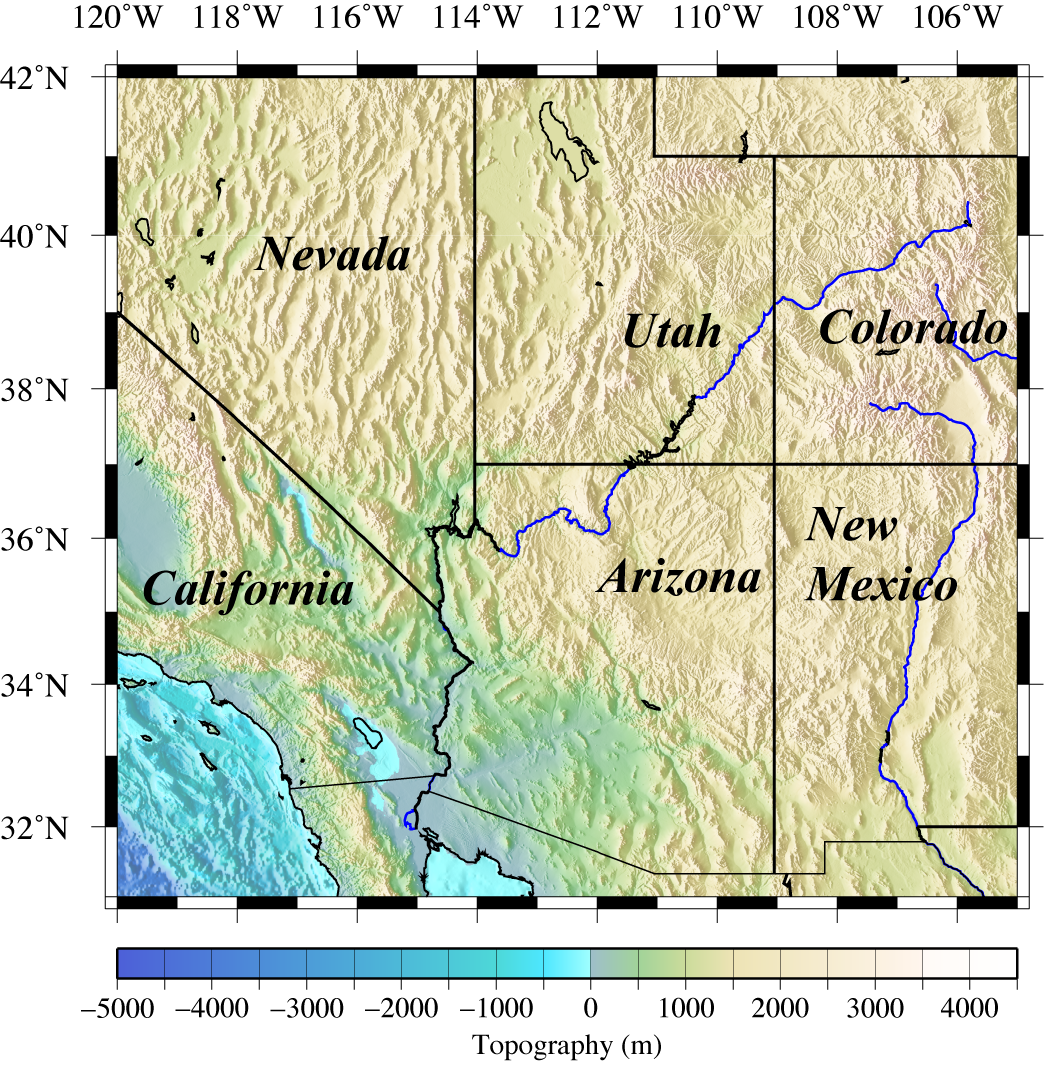This will be a good lesson on dealing with different formats of text files. Not everything that you deal with is easily loaded into Matlab using the load function.
Columns in "ears_overview.txt":
Network Code, Station Code, Station Latitude, Station Longitude, Station Elevation, Crustal Thickness, Std. Dev. (thickness), Vp/Vs, Std. Dev. (Vp/Vs), Assumed Vp, Vs, Poissons Ratio, Number of Earthquakes Used, Residual Complexity
Here is a function you can use to import the comma-delimited data into Matlab (ImportCSV).
For the columns that you want to use as numeric data, try this command to convert the cell array to a numeric array:
for n = 1:length(Column08)
if isempty(Column08{n})
NewColumn08(n) = NaN;
else
NewColumn08(n) = str2num(Column08{n});
end
end
You will need to subset this data because this file includes global data. Only include stations between longitudes -120 and -105 and latitudes 31 and 42. You know how to do this from previous homeworks.
Let us concentrate on the crustal thickness and Vp/Vs of the southwest US.
